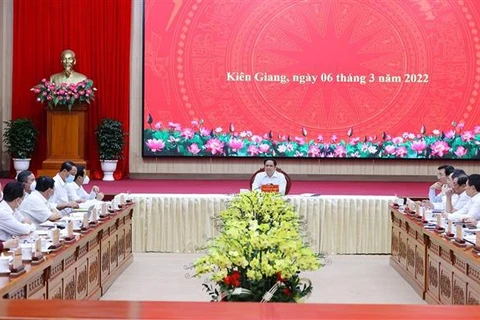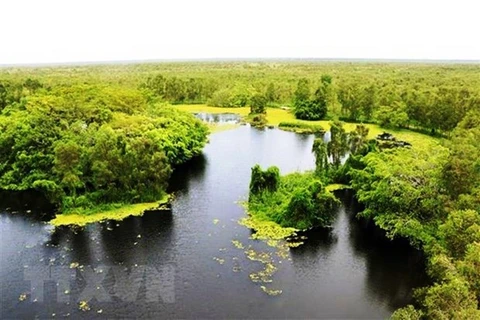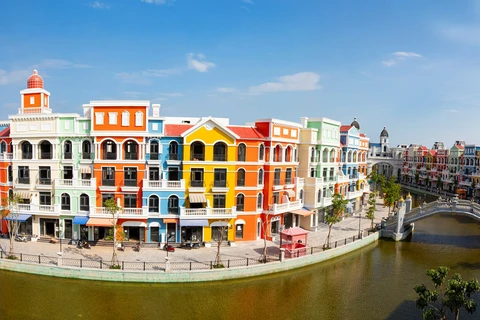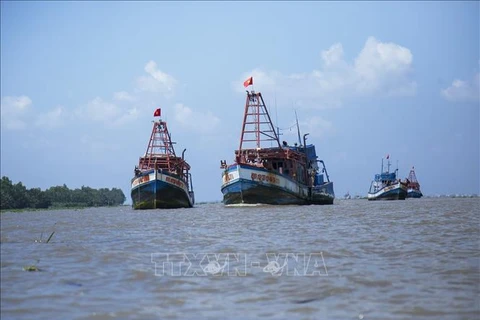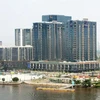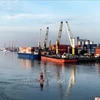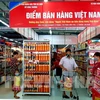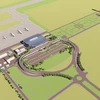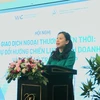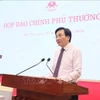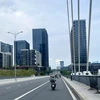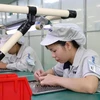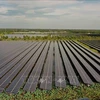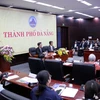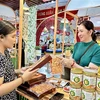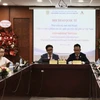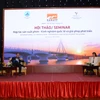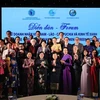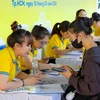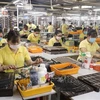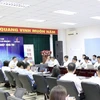Kien Giang (VNS/VNA) - The Mekong Delta province of Kien Giang has great potential and advantages in marine aquaculture and breeding of diversified marine aquatic species of high economic value, experts have said.
With its coastline of more than 200km and 143 islands, it had 3,610 floating cages last year, the largest number in the delta. They yielded a harvest of 3,000 tonnes last year.
The province is rarely hit by storms and its coastal waters are of moderate depth, both advantageous for marine aquaculture.
The province farms species like cobia, grouper, yellow pomfret, and pearl oysters in near-shore areas, mostly in Kien Hai and Kien Luong districts and Phu Quoc and Ha Tien cities.
Speaking at a seminar last week, Le Quoc Anh, Vice Chairman of the provincial People’s Committee, said however that breeding techniques are still outdated and infrastructure needs to be further developed for marine aquaculture.
But he said the marine economy would be the province’s key sector.
But the province has not taken measures to secure the supply of brood stock or manage their quality.
It lacks facilities to produce feed for aquatic creatures and process seafood for exports.
The linkages between various stakeholders in producing and consuming seafood products remain limited and so demand and prices are inconsistent.
The breeding of bivalve molusks near shore is affected by environmental pollution.
Nguyen Huu Dung, Chairman of the Vietnam Seaculture Association, said the province’s marine aquaculture is mostly manual and unplanned, of a small scale, and done mostly by individuals, making economic efficiency low.
The province should develop its marine aquaculture towards sustainability, use advanced techniques, breed marine species on a large scale, and switch from near - shore to off - shore aquaculture, he said.
It should diversify aquatic species to farm fish, bivalve molusks and seaweed together to increase their value and reduce pollution, he said.
Other participants suggested solutions for sustainable development such as using advanced techniques, developing links between various stakeholders and using hi-tech floating cages like high-density polyethylene ones based on the Norwegian model.
They too said the province should increase the production of high-quality brood stock, feed for aquatic creatures, modern floating cages and other facilities for aquaculture.
Kien Giang is implementing a plan to sustainably develop marine aquaculture in 2021 – 30, focusing on developing it on an industrial and modern scale.
It is supporting marine aquaculture by providing farmers with advanced breeding techniques and easy loans.
It is helping them establish co-operatives and co-operative groups that will link up with companies to increase production efficiency, secure outlets and steady prices and increase their incomes.
The province aims to have 3,890 floating cages and an output of 3,535 tonnes this year./.
With its coastline of more than 200km and 143 islands, it had 3,610 floating cages last year, the largest number in the delta. They yielded a harvest of 3,000 tonnes last year.
The province is rarely hit by storms and its coastal waters are of moderate depth, both advantageous for marine aquaculture.
The province farms species like cobia, grouper, yellow pomfret, and pearl oysters in near-shore areas, mostly in Kien Hai and Kien Luong districts and Phu Quoc and Ha Tien cities.
Speaking at a seminar last week, Le Quoc Anh, Vice Chairman of the provincial People’s Committee, said however that breeding techniques are still outdated and infrastructure needs to be further developed for marine aquaculture.
But he said the marine economy would be the province’s key sector.
But the province has not taken measures to secure the supply of brood stock or manage their quality.
It lacks facilities to produce feed for aquatic creatures and process seafood for exports.
The linkages between various stakeholders in producing and consuming seafood products remain limited and so demand and prices are inconsistent.
The breeding of bivalve molusks near shore is affected by environmental pollution.
Nguyen Huu Dung, Chairman of the Vietnam Seaculture Association, said the province’s marine aquaculture is mostly manual and unplanned, of a small scale, and done mostly by individuals, making economic efficiency low.
The province should develop its marine aquaculture towards sustainability, use advanced techniques, breed marine species on a large scale, and switch from near - shore to off - shore aquaculture, he said.
It should diversify aquatic species to farm fish, bivalve molusks and seaweed together to increase their value and reduce pollution, he said.
Other participants suggested solutions for sustainable development such as using advanced techniques, developing links between various stakeholders and using hi-tech floating cages like high-density polyethylene ones based on the Norwegian model.
They too said the province should increase the production of high-quality brood stock, feed for aquatic creatures, modern floating cages and other facilities for aquaculture.
Kien Giang is implementing a plan to sustainably develop marine aquaculture in 2021 – 30, focusing on developing it on an industrial and modern scale.
It is supporting marine aquaculture by providing farmers with advanced breeding techniques and easy loans.
It is helping them establish co-operatives and co-operative groups that will link up with companies to increase production efficiency, secure outlets and steady prices and increase their incomes.
The province aims to have 3,890 floating cages and an output of 3,535 tonnes this year./.
VNA

